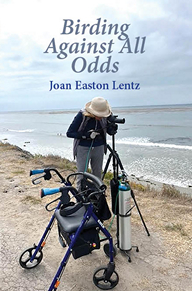Nature Journal, January 23, 2014
A Visit with Jon Dunn Brings Back Memories of A Super Rare Bird
A few days ago our Santa Barbara Audubon Society hosted Jon Dunn, who gave a lecture on shorebirds to an enthusiastic audience of local birders.
Jon has been the chief consultant for the National Geographic Society’s renowned field guide “The Birds of North America” since it’s first edition way back in 1983, and he is a world class birder.
Jon is also a close friend and mentor — largely because he lived in Santa Barbara in the 1980s, rooming with Paul Lehman, another top birder.
I was lucky enough to be around during those exciting times. Imagine being able to go birding with these two experts, who were finding birds all over our region and who let me tag along.
Seeing Jon’s slide show on shorebirds triggered memories of those “good old days” of birding: no cell phones, no internet postings, no e-bird. How did we manage?
We spent a lot of time on pay phones, I can tell you! And birding involved a much smaller group of dedicated aficionados.
One day and one particular shorebird stands out. That was the day Paul Lehman found a first North American record, a Little Curlew (Numenius minutus) in the agricultural fields near Santa Maria.
It was one of the most thrilling birding adventures of my life, and I want to write about it here.
It is all recorded in my Nature Journal from September 17, 1984. Bear with me as I attempt to recreate that incredible experience!
7:00 a.m. – I call Paul and find out that yesterday he saw what he was certain was a LITTLE CURLEW!! What??? He describes it to me over the phone and I am on fire with the idea that I have to get to Santa Maria to help search for this rarity. Frantically, I flip through the pages of my North American field guides, and I cannot even find a picture of the Little Curlew.
7:15 a.m. – Karen Bridgers calls to say that she’ll drive me up to Santa Maria. But first, I have to teach a birding class at Rocky Nook Park. And it is unbearably HOT — the day predicted to be in the 90 degrees.
Will the rarest bird ever to hit Santa Barbara County wait for me?
11:00 a.m. – Karen, Robbie Hamilton (who was to become another great birder from S.B.) and I head for the outskirts of Santa Maria, despite the fact the bird hasn’t been refound all morning.
12:15 p.m. – We drive up to the appointed field at the corner of Black and Bettaravia Rds., which in those days was a wet, irrigated pasture that often attracted Black-bellied Plovers, Greater Yellowlegs, Whimbrels, and Long-billed Curlews.
We pull up and park the car. Our worst fears are confirmed when we see the horde of birders staring aimlessly into the lush, green field, where the precious Little Curlew was last glimpsed at sundown the night before. Lots of big names: Guy McCaskie, Arnold Small, Richard Webster, and Brad Schram, along with Jon, Paul, and another local top birder, Louis Bevier.
1:30 p.m. – After standing idly in the hot sun for awhile, my friends and I decide to drive over and explore another spot. Despite one of the hotshot birders assuring us that every shorebird in every field has been checked since 5:30 a.m., we depart on our own.
We must look an odd sight as we tramp along the shoulder of this rural road. Huge produce trucks rumble by, nearly knocking us over.
If the trucks don’t get us, the heat will. The humidity and the temperature must both be approaching 100.
All at once, one of the many farmers who’ve been speeding by pulls over to the side of the road. He leans out his window.
“Whatcha looking for?” he asks.
We explain about the curlew.
“Curlews,” he says, “heck, I’ve got plenty of curlews on my property. Wanna have a look?” We glance at each other, then shrug our shoulders. What have we got to lose? (To be continued)

